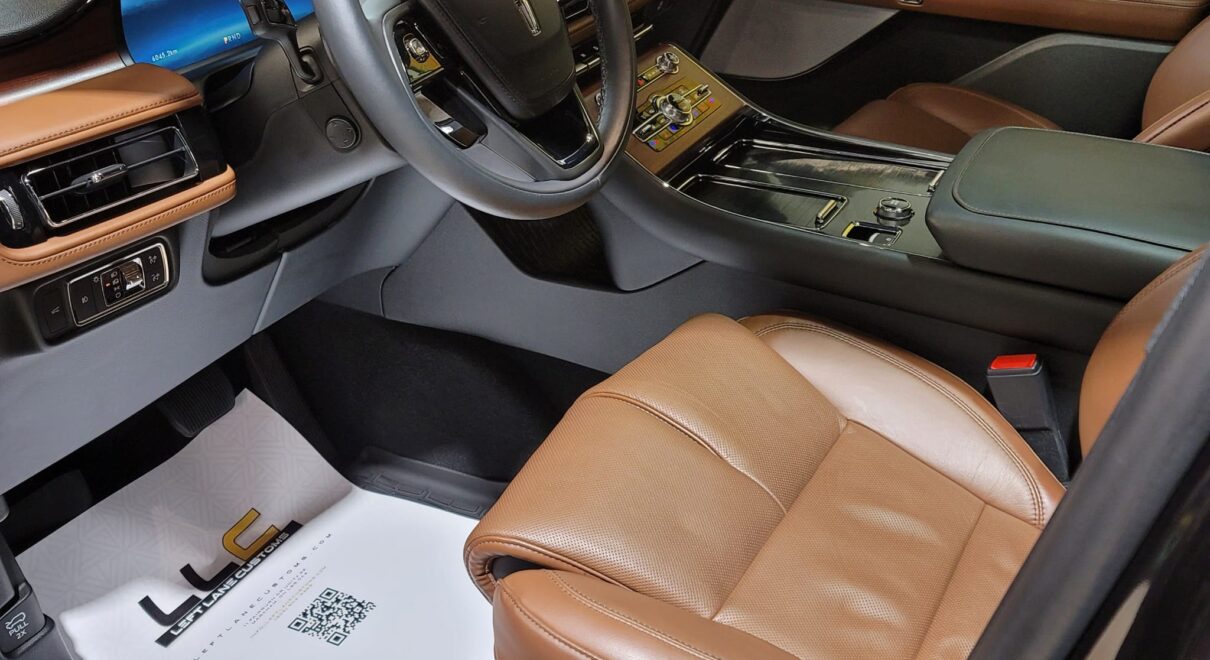
The Ultimate Toronto Winter Guide: Protecting Your Vinyl Wrap, PPF, and Ceramic Coating
The first flakes of snow have fallen, and across the Greater Toronto Area, a familiar winter ritual begins. We trade summer tires for winters, top up our washer fluid, and brace for the months of slush, ice, and biting cold. For a standard vehicle, this is tough. But for the owner of a customized car—one gleaming with a fresh vinyl wrap or shielded by paint protection film (PPF)—a Toronto winter presents a unique set of anxieties.
That brilliant shine, that perfect matte finish, or that invisible layer of protection suddenly feels vulnerable. The good news? It doesn’t have to.
As Scarborough’s experts in premium automotive care, we’ve seen it all. The key to surviving a Canadian winter with your custom finish intact isn’t to hide your car in a garage (though that helps!). It’s about proactive, consistent maintenance. This is your ultimate guide to protecting your investment from winter’s worst.
The #1 Enemy: Road Salt and Abrasive Grime
Before we get to the “how,” let’s understand the “why.” What makes a Toronto winter so uniquely damaging?
It’s not the snow. It’s not even the ice. It’s the road salt.
To keep roads passable, municipal trucks spread tons of sodium chloride (rock salt) and liquid de-icing brines. This corrosive mixture is ruthlessly effective at melting ice, but it’s just as effective at destroying your vehicle.
- For Vinyl Wraps: Salt is dehydrating. It can suck the moisture and plasticizers from the vinyl, leaving it brittle, faded, and more prone to cracking.
- For Paint Protection Film (PPF): While PPF is a robust shield, a constant barrage of salt can stain the film over time, giving it a yellowish, hazy appearance.
- For Your Paint & Undercarriage: Salt kicks up and lodges in every unseen crevice, especially the undercarriage, where it quietly eats away at metal, causing rust and corrosion. This is why services like undercarriage protection are so critical in our climate.
This salt doesn’t travel alone. It’s mixed with sand and abrasive grit, turning the slush on the DVP or the 401 into a low-speed sandblaster for your rocker panels and doors.
Winter Care for Vinyl Wraps
A high-quality vinyl wrap is a statement. Here’s how to keep it looking pristine, even when the temperature plummets.
- Wash It. Then Wash It Again.The most important rule is to wash your vehicle frequently. In winter, “frequently” means at least once a week, and ideally a quick rinse after any major snowfall or drive on freshly salted highways. Do not let that salty, grey grime sit on the wrap for days.
- Hand-Wash is Best (and Ditch the Brush).Avoid automatic, brush-based car washes. Those abrasive bristles can catch the edge of a wrap panel and cause it to lift, not to mention inflict swirls and scratches. Opt for a touchless car wash or, better yet, a gentle hand wash (using the two-bucket method) with a pH-neutral car soap.
- NEVER Use an Ice Scraper on Vinyl.This cannot be overstated. An ice scraper will permanently scratch and potentially gouge your vinyl wrap. To remove snow, use a soft-bristle snow brush or a foam brush, being careful not to drag any sharp edges across the surface. For ice, rely on your car’s defroster and remote start. Patience is your best tool here.
- Inspect Your Edges.Extreme cold can make adhesives less pliable. After washing, take a moment to inspect the edges and seams of your wrap. If you notice any slight lifting, bring it to a professional. Catching it early can prevent a small lift from becoming a major problem.
Winter Care for Paint Protection Film (PPF)
Your PPF is your car’s invisible armor, designed to take a beating. But even armor needs maintenance.
- Rinse, Rinse, Rinse.Like vinyl, PPF’s worst enemy is salt. The film’s job is to protect the paint, but the film itself can become stained if corrosive materials are left to bake in. A quick rinse with a pressure washer (from a safe distance, avoiding direct blasts on the edges) is your best friend.
- Be Mindful of Self-Healing Properties.One of PPF’s most magical features is its “self-healing” top coat, which makes light scratches disappear with heat. In winter, this property is significantly dampened by the cold. The film is harder and less pliable, so those light scratches won’t heal on their own. This makes gentle, scratch-free washing techniques even more important.
- Wipe Up Contaminants Immediately.Winter slush isn’t just salt and water; it’s full of oil, tar, and other road chemicals. If you see any dark or oily spots on your PPF, spot-clean them with a gentle automotive cleaner as soon as possible.
The Ultimate Winter Defence: Ceramic Coatings
If PPF and vinyl wraps are the armor, a ceramic coating is the force field. And it’s arguably the single best investment you can make for winter driving in Toronto.
A high-quality ceramic coating, like the IGL-accredited ones we use at Left Lane Customs, creates a molecularly-bonded, super-slick (hydrophobic) layer on top of your car’s surfaces. This changes the game completely.
- Extreme Hydrophobicity: Instead of sticking, slush, ice, and salty grime bead up and slide right off.
- Makes Washing Effortless: A ceramic-coated car is “self-cleaning” to a degree. When you do go to wash it, the salt and dirt release with minimal effort, reducing the need for scrubbing and minimizing the risk of scratches.
- Chemical Resistance: The coating provides a sacrificial barrier that is highly resistant to the chemicals found in road salt and de-icing brines.
The best part? A ceramic coating can be applied on top of both paint and PPF. This combination—the impact protection of Paint Protection Film and the chemical resistance and ease of cleaning of a ceramic coating—is the absolute gold standard for vehicle preservation in a climate like ours.
Your Winter Action Plan
Surviving a Toronto winter with your vehicle’s finish intact is all about preparation and maintenance.
- Before Winter: Get your car professionally detailed and protected. This is the perfect time to apply a ceramic coating or PPF to create a strong barrier before the first salt truck rolls out.
- During Winter: Wash your car weekly. Be gentle. Use pH-neutral soaps. Never use an ice scraper on protected surfaces.
- After Winter: Once the salt is gone for good, treat your car to a “spring cleaning” professional detail. This will decontaminate the surfaces, remove any lingering salt, and get it ready for the summer.
Your car is an investment. Protecting it from the harsh reality of our city’s winters is our specialty. Don’t leave it to chance—stop by our Scarborough shop, and let’s build a winter protection plan that’s right for you.
Visit us on Facebook at our Facebook Link and our Instagram Link. Left Lane Customs Inc.


